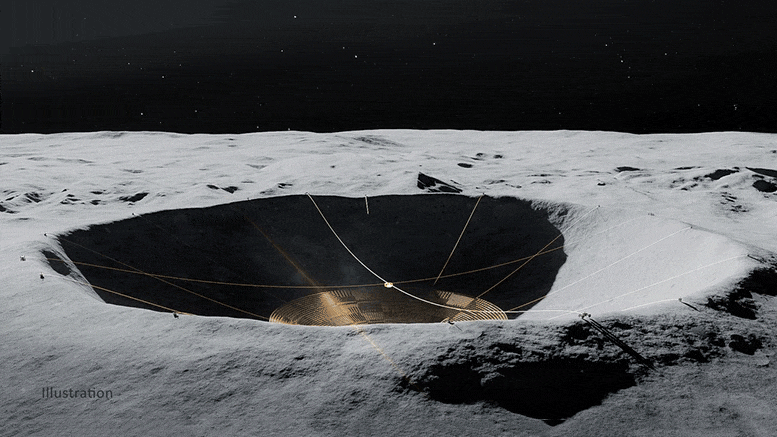
Cosmologists know little about this period, but came the answers to some of science’s biggest mysteries may be locked in the long-wavelength radio emissions generated by the gas that would have filled the universe during that time.
“While there were no stars, there was ample hydrogen during the universe’s Dark Ages – hydrogen that would eventually serve as the raw material for the first stars,” said Joseph Lazio, radio astronomer at NASA’s Jet Propulsion Laboratory in Southern California and a member of the LCRT team.Radio telescopes on Earth can’t probe this mysterious period because the long-wavelength radio waves from that time are reflected by a layer of ions and electrons at the top of our atmosphere, a region called the ionosphere.Random radio emissions from our noisy civilization can interfere with radio astronomy as well, drowning out the faintest signals.
“Radio telescopes on Earth cannot see cosmic radio waves at about 33 feet [10 meters] or longer because of our ionosphere, so there’s a whole region of the universe that we simply cannot see,” said Saptarshi Bandyopadhyay, a robotics technologist at JPL and the lead researcher on the LCRT project.To be sensitive to long radio wavelengths, the LCRT would need to be huge.The biggest single-dish radio telescopes on Earth – like the 1,600-foot (500-meter) Five-hundred-meter Aperture Spherical Telescope (FAST) in China and the now-inoperative 1,000-foot-wide (305-meter-wide) Arecibo Observatory in Puerto Rico – were built inside natural bowl-like depressions in the landscape to provide a support structure.
The conceptual radio telescope could be constructed from a wire mesh dish inside a crater.This class of radio telescope uses thousands of reflecting panels suspended inside the depression to make the entire dish’s surface reflective to radio waves.The receiver then hangs via a system of cables at a focal point over the dish, anchored by towers at the dish’s perimeter, to measure the radio waves bouncing off the curved surface below.
With his team of engineers, roboticists, and scientists at JPL, Bandyopadhyay condensed this class of radio telescope down to its most basic form.Instead of using thousands of reflective panels to focus incoming radio waves, the LCRT would be made of thin wire mesh in the center of the crater.
“DuAxel solves many of the problems associated with suspending such a large antenna inside a lunar crater,” said Patrick Mcgarey, also a robotics technologist at JPL and a team member of the LCRT and DuAxel projects.China’s space agency currently has a mission exploring the lunar far side, after all, and further development of the lunar surface could impact possible radio astronomy projects.
